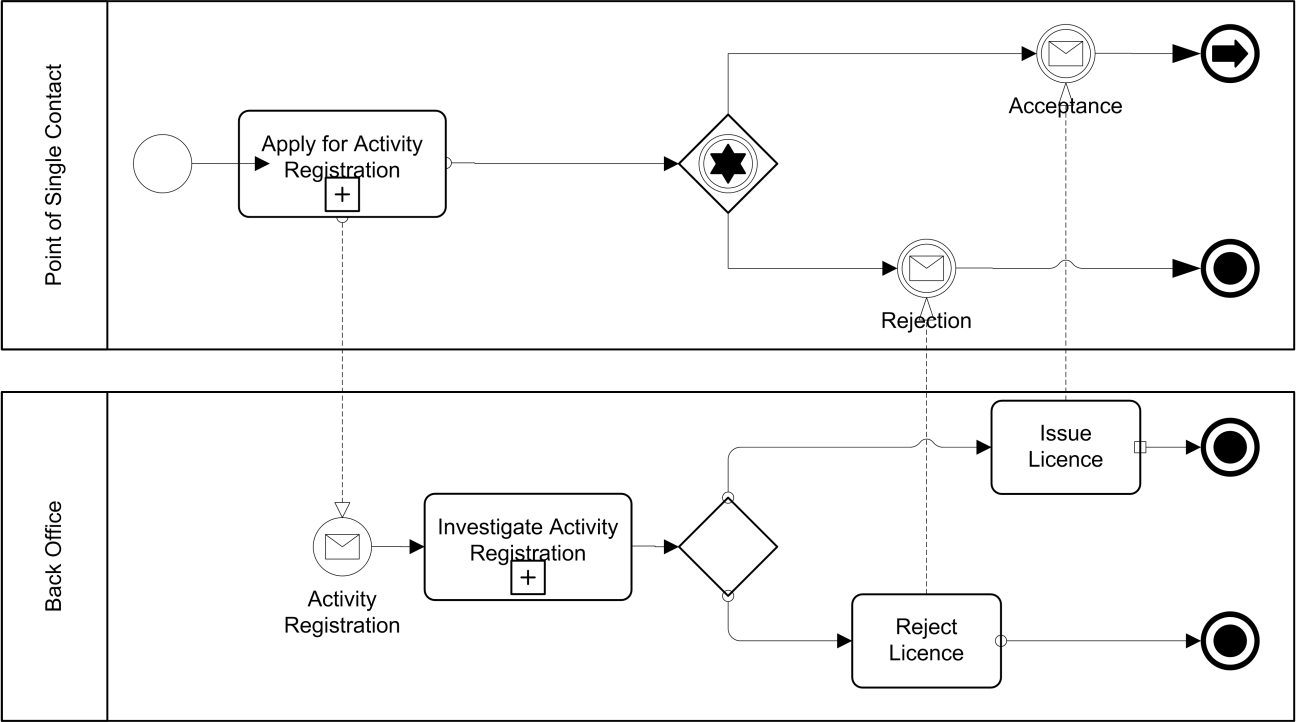This report ![]()
Executive summary
Chapter 1 introduces the report. We provide context to the definitions for e-Document and e-Document engineering. We also motivate that there is a need for guidance on e-Document engineering among pubic administrations. A recent survey revealed that to date, public administrations spend considerable effort to assess, select, and apply existing e-Document engineering methods or to develop and apply their own method.
In Chapter 2 we list high-level and generic functional requirements for e-Document engineering methods. These generic requirements have been validated by e-Document engineering experts and discussed with the e-SENS Competence Cluster on Semantics, processes and Documents. These requirements are classified into seven categories:
- Context and requirements gathering;
- Information modelling;
- Business rules definition;
- Syntax binding;
- Schema production;
- Governance; and
- Conformance testing.
In Chapter 3, we assess three commonly used standard e-Document engineering methods, i.e. UN/CEFACT, OASIS UBL TC and the CEN BII method. The selection of these three engineering methods for our study is motivated by the fact that the former two have inspired the development of the Core Vocabularies, whereas the latter method demonstrates how existing e-Document formats can be reused in context specific application profiles. The assessment is carried out according to the Common Assessment Method of Standards and Specifications (CAMSS) in the field of ICT. CAMSS consists among others of an assessment process and a set of neutral and unbiased assessment criteria. The CAMSS assessment criteria cover the following domains: applicability, maturity, openness, intellectual property rights, market support, potential and coherence. A full overview of the CAMSS assessment per e-Document engineering method is provided in Annex III Assessment e-Document engineering methods based on the CAMSS criteria, illustrating to which extent the methods could be used by public administrations.
In Chapter 4, using the requirements gathering methodology from the CEN BII method and the information modelling and XML naming and design rules from the OASIS UBL TC method, we carried out a mini-pilot on e-Document engineering in collaboration with e-SENS WP 6.2 Competence Cluster on Semantics, processes and Documents. The objectives of the mini-pilot were:
- To demonstrate the use of a standard e-Document engineering method to create e-Document formats; and
- To demonstrate how a metadata registry, a common library of data elements and mappings, can help e-Document engineering.
The mini-pilot is based on a use case and more elaborate pilot proposed by e-SENS WP 5 ‘Use Case 5.4 – Registering a new business activity’, which describes the activity registration of a business in a foreign Member State.

Chapter 5 concludes the report by formulating a number of recommendations based on the experience gained from the mini-pilot:
- Select a standard e-Document engineering method, speeding up the process, enhancing documentation, lowering risk and cost, and facilitating maintenance and governance;
- Use standard libraries, increasing interoperability and ease of development and deployment, and facilitating mash-up from different e-Documents and data models;
- Make e-Document formats available for reuse, increasing cross-sector and cross-border interoperability, and gaining additional feedback from peers;
- Follow good practices for metadata governance and management, ensuring the stability and durability of the e-Document formats;
- Explore the feasibility of operating a federated metadata registry, increasing discoverability and reuse of data elements from standard libraries and other e-Document formats, describing mappings between libraries, and enhancing documentation and traceability of e-Document formats through links between data elements and requirements; and
- Use existing tools, reducing cost and risk for errors, and increasing interoperability through uniformity and compliance with standards.
Related links
- Tutorial: On the use of Crane’s Genericode-to-UBL-NDR to extend the Core Vocabularies and create e-Document formats, April 2014.
-
e-Document engineering pilot, Using a metadata registry for e-Document engineering. http://mdr.semic.eu/. May 2014.
-
Study: Analysis of structured e-Document formats used in Trans-European Systems, May 2014.
Nature of documentation: Technical report

